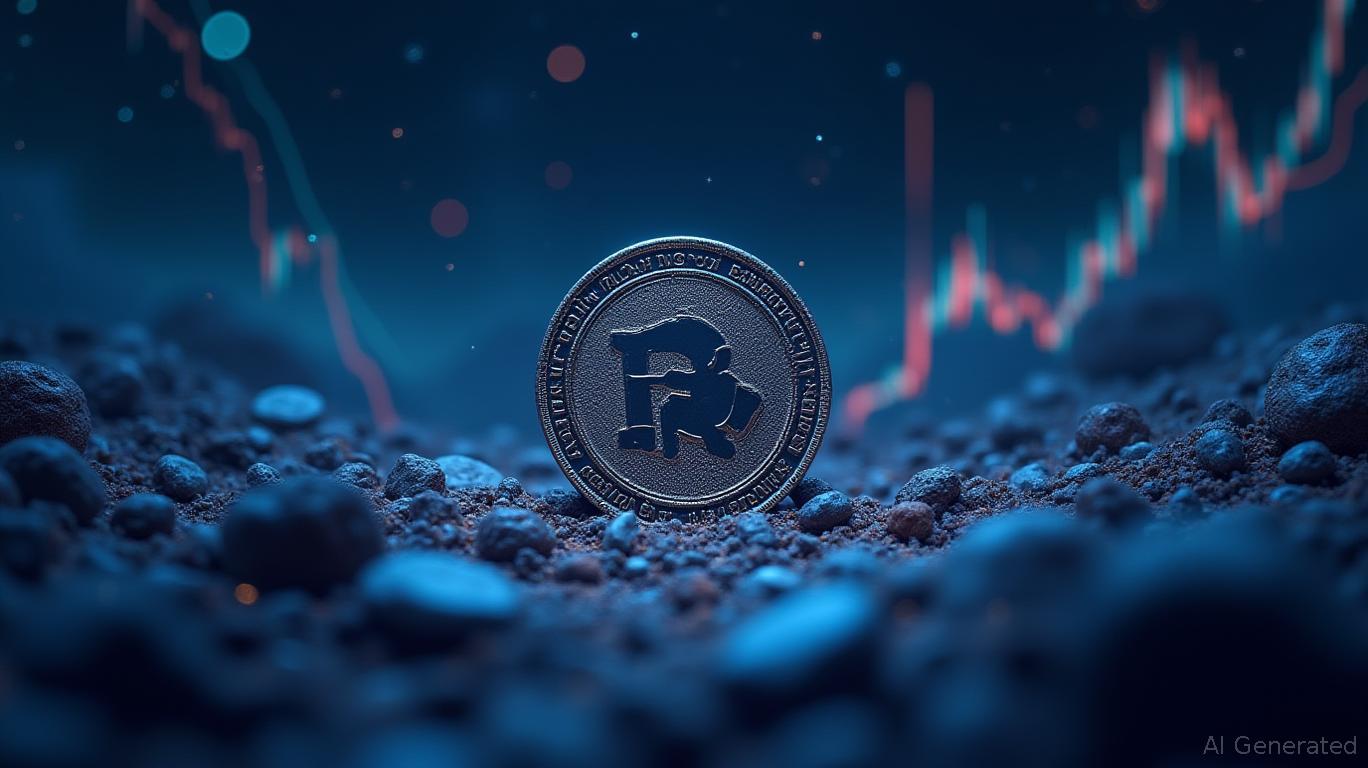Asia's rapid growth in stablecoins sets technological advancement in contrast with regulatory prudence
- Kaia DLT Foundation drives Asia's multi-currency stablecoin growth amid $46T 2025 global transaction volumes, outpacing traditional payment giants. - Major players like Western Union (Solana), PayPal (Paxos) and Visa (Stellar) expand stablecoin offerings, with Visa reporting $2.5B annualized volumes in Q4 2025. - China's PBOC warns of stablecoin risks to monetary sovereignty, while Hong Kong positions itself as a digital asset hub through regulated initiatives like Red Date's cross-border solutions. - Re
The
Western Union has recently revealed a partnership with Anchorage Digital to launch a Solana-based stablecoin, joining a growing list of traditional financial institutions entering the sector. At the same time, MoneyGram is utilizing Circle’s

The sector’s swift growth has attracted regulatory attention. The People’s Bank of China (PBOC) has issued a strong warning, labeling stablecoins as a risk to monetary sovereignty, especially in developing nations. Governor Pan Gongsheng stressed the need to crack down on domestic crypto activities and is closely watching regulated stablecoin projects in Asia, such as Japan’s JPYC, backed by 66 billion yen, and South Korea’s KRW1, which runs on Avalanche. “Stablecoins fail to meet essential standards like customer verification and anti-money laundering,” Pan remarked, echoing the Financial Stability Board’s (FSB) concerns, which reported the market’s circulation at $150 billion by mid-2025, according to the
On the other hand, Hong Kong is establishing itself as a center for digital assets, even as Beijing remains cautious. Yifan He, CEO of Red Date Technology, believes that geopolitical rivalry, especially between the U.S. and China, will fuel progress. “The more the U.S. pushes digital assets, the more China feels compelled to respond,” He commented, underlining stablecoins’ significance in international trade and capital movement. Hong Kong’s strategy, focusing on institution-driven projects like government bond tokenization and regulated stablecoins, aims to capitalize on its strategic position between East and West, as highlighted in coverage of
Regulatory frameworks are also taking shape. Canada intends to introduce stablecoin regulations in its November budget, seeking to categorize tokens as securities or derivatives and to curb capital outflows to U.S. dollar-backed assets. This follows the European Union’s MiCA rules, which set out requirements for reserves and liquidity. Meanwhile, the Stablecoin Standard’s new StableCheck tool—a global assessment system for fiat-backed stablecoins—aims to improve transparency and governance, according to the
Industry players are also evolving. Visa reported $2.5 billion in annualized stablecoin transactions in the fourth quarter of 2025, with 130 card programs linked to stablecoins in 40 countries. Visa is expanding its platform for tokenized assets, enabling banks to issue and redeem stablecoins, and is piloting prefunding solutions for international remittances, as outlined in the
As Asia’s stablecoin market evolves, the balance between regulatory oversight and technological innovation will shape its future. With both geopolitical dynamics and new technologies at play, the region’s approach to stablecoins could influence global financial standards. For now, the push to define standards—whether through frameworks like StableCheck or national policies—highlights the pressing need to balance expansion with security.
Disclaimer: The content of this article solely reflects the author's opinion and does not represent the platform in any capacity. This article is not intended to serve as a reference for making investment decisions.
You may also like
Caribbean Prepares for Hurricane as Geopolitical Strains and Reductions in Food Assistance Loom
- Hurricane Melissa, a Category 4 storm, threatens Jamaica with catastrophic flooding and landslides as it intensifies before landfall. - U.S.-Trinidad military drills face Venezuela's "false-flag" accusations, highlighting regional tensions amid natural disaster preparations. - Trump administration's Nov. 1 food aid cuts draw bipartisan criticism, forcing states to redirect SNAP recipients amid hurricane supply chain risks. - U.S.-China trade talks aim to avoid tariffs over rare earths, while Canada faces

Bitchat's Bluetooth system remains robust while hurricanes severely damage Jamaica's infrastructure
- Bitchat, a Bluetooth-based decentralized messaging app, became Jamaica's second-most downloaded app as Hurricane Melissa crippled infrastructure with 185-mph winds. - The storm killed 30+ people across the Caribbean, including 23 in Haiti, while the app enabled encrypted communication during power outages and flooding. - Bitchat's surge mirrored crisis adoption in Nepal, Indonesia, and Madagascar, highlighting its utility in disaster zones with decentralized, censorship-resistant networks. - The Trump ad

MoonBull's Scarcity Approach Surpasses TON, LINK's Lackluster Progress
- MoonBull's presale raised $450k from 1,500+ investors, projecting 9,256% returns if tokens hit $0.00616. - Outpaces stagnant TON and LINK amid market volatility, leveraging 23-stage pricing and 95% APY staking. - Mobunomics allocates 73.2B tokens with 50% presale scarcity and 11% referral incentives to boost adoption. - Meme-driven narrative combines viral marketing with utility, attracting both retail and institutional investors. - Stage 5 marks final entry before listing, with escalating prices and lim

HBAR ETF Gets Green Light, But Convincing Altcoin Doubters Remains Challenging
- Hedera's HBAR token dropped 6% post-ETF approval, contrasting with Solana's $56M debut volume. - The $8M HBAR ETF launch highlights altcoin market skepticism despite regulatory progress and institutional backing. - Technical indicators like death cross and declining on-chain metrics signal bearish momentum for HBAR. - Analysts note ETFs provide regulated institutional access, though broader crypto volatility and SEC delays dampen immediate adoption. - Hedera's enterprise partnerships and USDC growth on i
